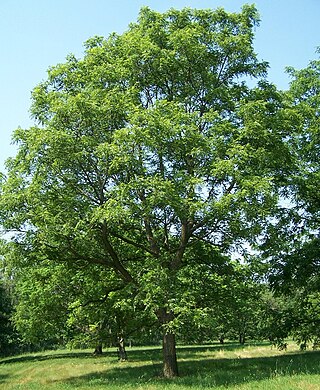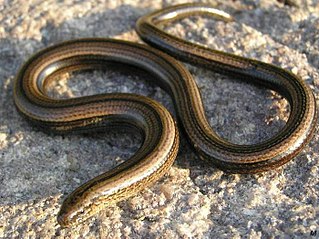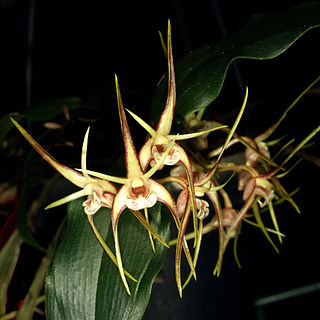
Chives, scientific name Allium schoenoprasum, is a species of flowering plant in the family Amaryllidaceae that produces edible leaves and flowers. Their close relatives include the common onions, garlic, shallot, leek, scallion, and Chinese onion.

Spearmint, also known as garden mint, common mint, lamb mint and mackerel mint, is a species of mint, Mentha spicata (, native to Europe and southern temperate Asia, extending from Ireland in the west to southern China in the east. It is naturalized in many other temperate parts of the world, including northern and southern Africa, North America, and South America. It is used as a flavouring in food and herbal teas. The aromatic oil, called oil of spearmint, is also used as a flavoring and sometimes as a scent.

An embryo is an initial stage of development of a multicellular organism. In organisms that reproduce sexually, embryonic development is the part of the life cycle that begins just after fertilization of the female egg cell by the male sperm cell. The resulting fusion of these two cells produces a single-celled zygote that undergoes many cell divisions that produce cells known as blastomeres. The blastomeres are arranged as a solid ball that when reaching a certain size, called a morula, takes in fluid to create a cavity called a blastocoel. The structure is then termed a blastula, or a blastocyst in mammals.

Reynoutria japonica, synonyms Fallopia japonica and Polygonum cuspidatum, is a species of herbaceous perennial plant in the knotweed and buckwheat family Polygonaceae. Common names include Japanese knotweed and Asian knotweed. It is native to East Asia in Japan, China and Korea. In North America and Europe, the species has successfully established itself in numerous habitats, and is classified as a pest and invasive species in several countries.

A cherry is the fruit of many plants of the genus Prunus, and is a fleshy drupe.

The term carp is a generic common name for numerous species of freshwater fish from the family Cyprinidae, a very large clade of ray-finned fish mostly native to Eurasia. While carp are prized quarries and are valued as both food and ornamental fish in many parts of the Old World, they are generally considered useless trash fish and invasive pests in many parts of Africa, Australia and most of the United States.

Stag beetles are a family of about 1,200 species of beetles in the family Lucanidae, currently classified in four subfamilies. Some species grow to over 12 centimetres, but most to about 5 cm (2 in).

Walnut trees are any species of tree in the plant genus Juglans, the type genus of the family Juglandaceae, the seeds of which are referred to as walnuts. All species are deciduous trees, 10–40 metres (33–131 ft) tall, with pinnate leaves 200–900 millimetres (7.9–35.4 in), with 5–25 leaflets; the shoots have chambered pith, a character shared with the wingnuts (Pterocarya), but not the hickories (Carya) in the same family.

The European eel is a species of eel, a snake-like, catadromous fish. They are normally around 60–80 cm (2.0–2.6 ft) and rarely reach more than 1 m, but can reach a length of up to 1.5 m in exceptional cases.

The slow worm is a reptile native to western Eurasia. It is also called a deaf adder, a slowworm, a blindworm, or regionally, a long-cripple and hazelworm. These legless lizards are also sometimes called common slowworms. The "blind" in blindworm refers to the lizard's small eyes, similar to a blindsnake.

Berberis, commonly known as barberry, is a large genus of deciduous and evergreen shrubs from 1–5 m (3.3–16.4 ft) tall, found throughout temperate and subtropical regions of the world. Species diversity is greatest in South America and Asia; Europe, Africa and North America have native species as well. The best-known Berberis species is the European barberry, Berberis vulgaris, which is common in Europe, North Africa, the Middle East, and central Asia, and has been widely introduced in North America. Many of the species have spines on the shoots and all along the margins of the leaves.

An Important Bird and Biodiversity Area (IBA) is an area identified using an internationally agreed set of criteria as being globally important for the conservation of bird populations.

Reeves's muntjac, also known as the Chinese muntjac, is a muntjac species found widely in southeastern China and Taiwan. It has also been introduced in the United Kingdom, Ireland, the Netherlands, Belgium, and Japan. It takes its name from John Reeves, a naturalist employed by the British East India Company in the 19th century.

The mustard plant is any one of several plant species in the genera Brassica and Sinapis in the family Brassicaceae. Mustard seed is used as a spice. Grinding and mixing the seeds with water, vinegar, or other liquids creates the yellow condiment known as prepared mustard. The seeds can also be pressed to make mustard oil, and the edible leaves can be eaten as mustard greens. Many vegetables are cultivated varieties of mustard plants; domestication may have begun 6,000 years ago.

Ostrea edulis, commonly known as the European flat oyster, is a species of oyster native to Europe. In Britain and Ireland, regional names include Colchester native oyster, mud oyster, or edible oyster. In France, Ostrea edulis are known as huîtres plates except for those that come from the Belon River estuary in Brittany, France, which are known as Belons.

Echium pininana, commonly known as the tree echium, pine echium, giant viper's-bugloss, or tower of jewels, is a species of flowering plant in the borage family Boraginaceae. It is endemic to the Canary Islands, where it is restricted to the island of La Palma. Echium pininana is an endangered species, and is listed in Appendix I to, and is therefore protected under, the Convention on the Conservation of European Wildlife and Natural Habitats. The specific epithet pininana is Latin for "small pine", though E. pininana is neither closely related to the pine, nor does it resemble that plant.

Dendrobium tetragonum, commonly known as the tree spider orchid, is a variable species of epiphytic or lithophytic orchid endemic to eastern Australia. Tree spider orchids are unusual in having pendulous pseudobulbs that are thin and wiry near the base then expand into a fleshy, four-sided upper section before tapering at the tip. There are only a few thin but leathery leaves at the end of the pseudobulbs and up to five flowers on relatively short flowering stems. To allow for the variations in the species there are five subspecies and a variety, some with a unique common name.
Conostomum is a genus of mosses belonging to the family Bartramiaceae.

The Cliff Villa Peninsula is a promontory where two currents meet on the north-westerly point of the island of Curaçao


















